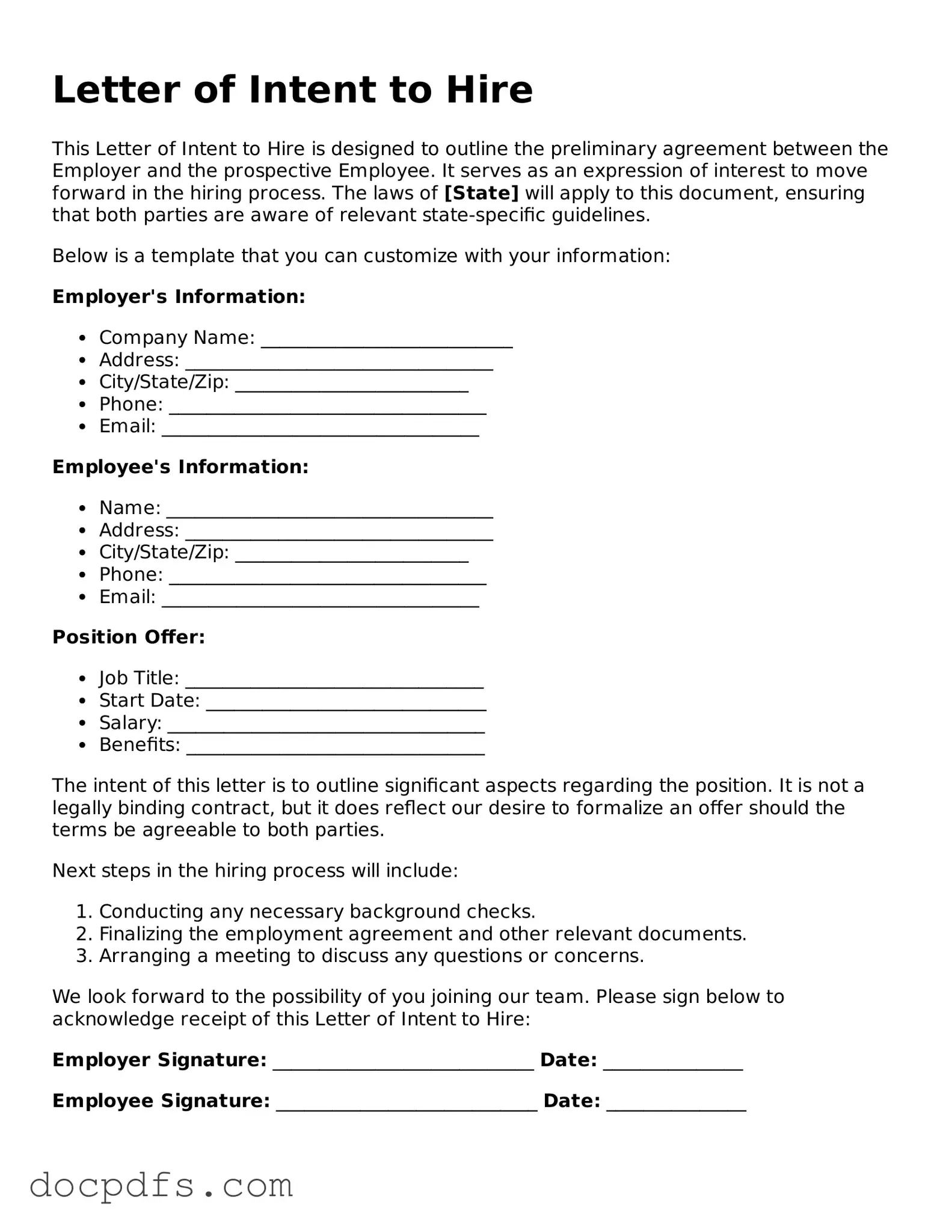Legal Letter of Intent to Hire Document
A Letter of Intent to Hire is a document that outlines the preliminary agreement between an employer and a potential employee, indicating the employer's intention to hire the individual for a specific position. This form serves as a foundation for further negotiations and can include details such as job responsibilities, salary expectations, and start dates. By clearly stating the intentions of both parties, it helps to establish a mutual understanding before the formal employment contract is finalized.
Open Letter of Intent to Hire Editor Now
